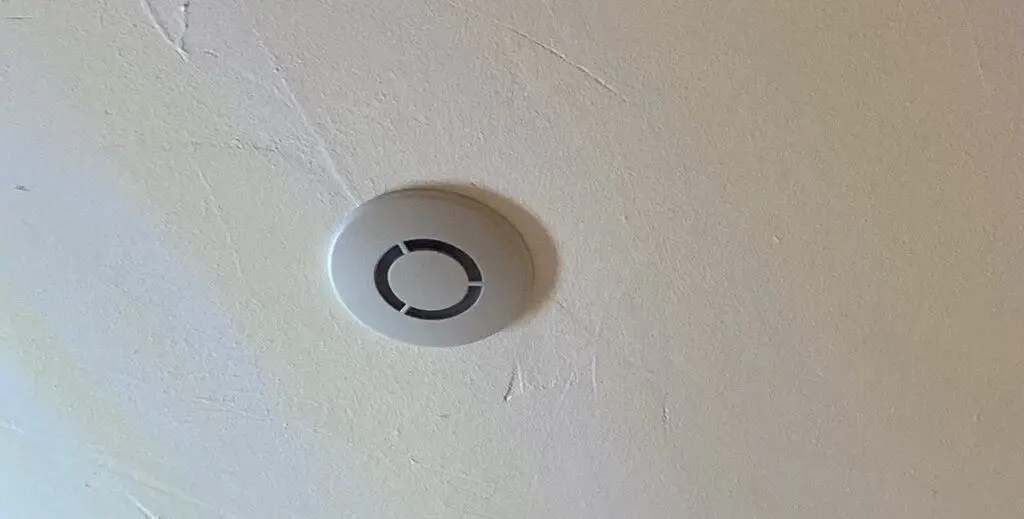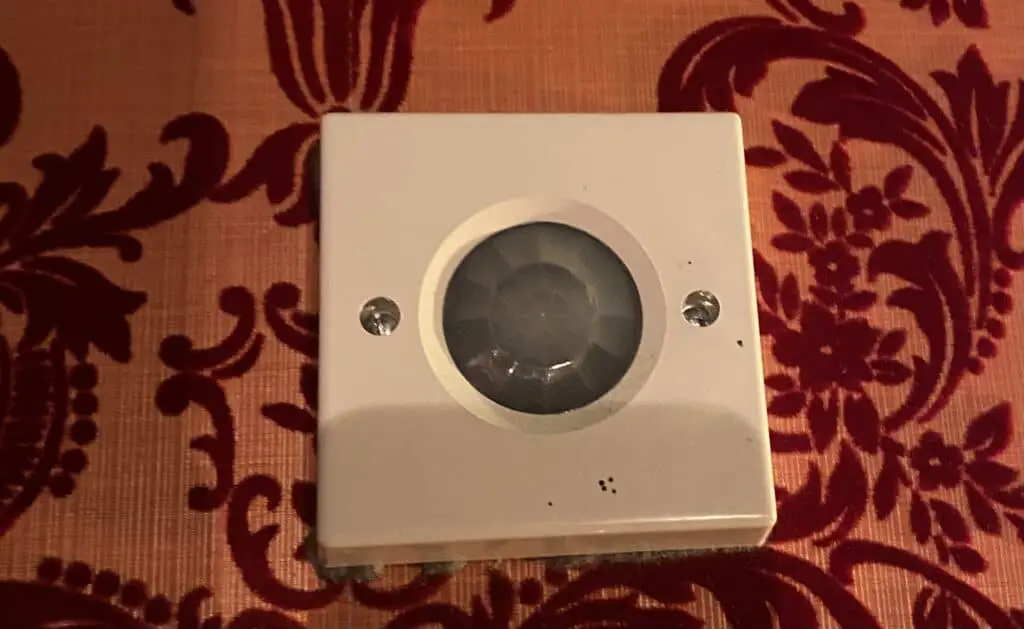Before we begin, I need to get a mini rant off my chest. I have spent countless hours trying to get microwave sensors set up correctly, trying to balance the need to activate on presence with not triggering every time someone moves in another state.
Microwave sensors are great at detecting movement and have advantages compared with PIRs but this sensitivity can come at the price of your sanity when trying to commission. If you’re trying to decide if a microwave sensor is right for your installation, you need to know if they can detect through walls, metal and glass.
Fear not, this post has the answer in what I hope is a quick and easy way to understand!

Microwave sensors can effectively detect through glass, and are widely used in automatic door operations. They can also detect through walls and metal but the results are a little hit-and-miss depending on a few factors shown below.
As mentioned in the intro, microwave sensors’ ability to detect through different materials can be both a blessing and a curse. It took me a while to figure out why sometimes commissioning one was simple and other times it turned into a nightmare.
Hopefully, readers can learn from my mistakes and save themselves a lot of frustration along the way!
Do Microwave Sensors Work Through Glass?
Microwave sensors can work through glass, but it depends on the type and thickness of the glass. Thicker or reinforced glass, such as car windows, typically reduces the signal causing reduced detection or none at all.
If working through glass is an important consideration of the project, some microwave sensors are designed specifically to work through glass, such as those used in automatic doors or presence sensors.
These sensors use a combination of microwave and infrared technology to detect movement and proximity through glass surfaces, without being affected by the glass itself.
Working through glass can be both good and bad. For applications such as automatic doors, it is obviously a huge advantage. When using microwave sensors to control lighting their ability to detect through glass can cause sensitivity issues.
If you have a motion sensor light that is constantly triggering it may be that it is picking up unwanted movement from inside the building. This is an issue that can be tricky to hunt down in my experience.

Do Microwave Sensors Work Through Walls?
Microwave sensors can detect movement through walls, but the effectiveness of the sensor depends on the type of wall and the thickness of the material. Microwave sensors can easily penetrate through drywall, wood or glass, but have difficulty passing through thick, dense materials like concrete.
I did discover on my research journey that some advanced microwave sensors, such as those used by the military or law enforcement, can penetrate through multiple layers of walls and even detect movement through solid metal. How cool is that?
Although the sensor can easily pass through thin wall materials, such as drywall, it will have an effect on the sensor’s detection range.
If the sensor has to pass through multiple walls, or walls made of denser materials the detection range is significantly reduced. As with glass, setting up a microwave sensors detection range can be some trial and error.
In my experience, microwave sensors to control corridor lights are great, and my go-to choice usually, but they are prone to false triggers by detecting movement in the rooms on either side of the corridor.
Sometimes in these instances, there is only so much you can do to balance early detection with limiting false triggers.

Do Microwave Sensors Work Through Metal?
Microwave sensors are able to work through metal but their ability to work accurately is dependent on the type of metal and its thickness. Some metals, such as aluminium, are more transparent to microwaves than others, such as steel.
Being more transparent means that the microwave signal is more likely to pass through aluminium than steel. However, even with aluminium, the thickness of the metal has a large effect on how well the microwave signal can pass through it.
As well as the metal material and thickness, another factor to consider is the frequency of the microwave signal. Different frequencies will behave differently when they encounter metal. For example, lower frequencies are more likely to pass through metal than higher frequencies.
If detecting through metal is desired, or a concern, selecting the right sensor can make a big difference. Some sensors are designed with metal shielding to prevent interference from other sources. This metal shielding can help if the sensor is too sensitive, but will be a hindrance if the desire is to operate through metal.
Do Microwave Sensors Work Outside?
Microwave detectors do work outside but as an electrician, I typically favour installing PIR detectors for exterior motion detection. In my experience, microwave sensors are a little too sensitive and weather conditions can play havoc with their reliability when used outside.
Whilst IP-rated sensors are available, rain, snow, and fog can all affect the performance of microwave sensors, as they can absorb or scatter the microwave radiation. This can make it difficult to get accurate readings, especially if the sensor is being used to detect small objects or changes in the environment.
generally, for exterior applications such as lighting, installing a PIR sensor is the better option in my opinion. They are more robust, easier to set up and less prone to irritating unwanted activations. You can read more about the difference between PIR and Microwave sensors here!
